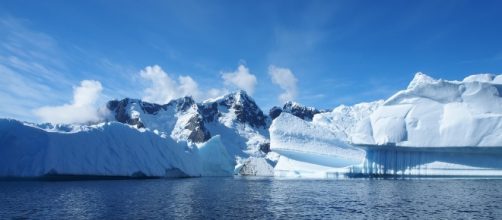Antarctica is mostly covered with ice, but researchers have questioned for decades what all of the ice may be hiding underneath. A new study has revealed that the continent houses a series of volcanoes under the ice sheet that covers the entire landscape. The results of the study also indicate that not only are there several volcanoes, Antarctica may house as many volcanoes as are found in East Africa and western North America.
Antarctica Volcanoes
Research has discovered 91 previously unidentified volcanoes underneath the ice sheet covering the continent.
Among these, some are as high as 12,600 feet. Previous studies have also hinted at the presence of the volcanoes Beneath The Ice, but due to the presence of the immensely thick layer of the ice covering the surface, it has been immensely difficult to study the geology.
Now, with the use of an advanced technology and radar, researchers from the University of Edinburgh School of GeoSciences have been able to analyze what lies beneath the ice sheet covering the continent. Through the satellite radar system, the team created an elevation model, called Bedmap 2 DEM. The team then studied this elevation and discovered that a series of volcanoes were hidden under the ice.
Before classifying the underlying structures as volcanoes, however, the team came up with five-point criteria to gauge how confident they were that a structure could be a volcano.
The criteria included several known features that every volcano exhibits. Thus, in this way, researchers were able to determine which of the geological structures are volcanoes and which are not.
The study resulted in the discovery of 178 cone shaped structures underneath the ice covering Antarctica, out of which 138 were deemed to be most likely belonging to volcanoes.
The ones that were identified ranged in height from a mere 328 feet to 12,600 feet and the cone themselves ranged from two miles to just under 40 miles in diameter. Out of these, 91 volcanoes were previously unidentified and the density of these volcanoes was judged to be around one volcano every 4,800 square miles.
Implications of these volcanoes
Researchers feel that the presence of such a high number of volcanoes will have some serious consequences when it comes to the future of the continent. The heat from these volcanoes is perhaps the reason behind the rifts and melting of the ice that has been observed in recent times, although the researchers have stated that there is no evidence to support the same. The study was also unable to reveal if any of the volcanoes were indeed active currently and more in-depth research needs to be conducted to determine the same.

